| Lesson 5 | Disk I/O and Oracle |
| Objective | Explain the importance of disk I/O to Oracle database performance. |
Disk I/O | Database Performance
Disk Input/Output (I/O) operations are a pivotal aspect of Oracle database performance, fundamentally influencing the efficiency and responsiveness of data retrieval and storage processes. In an Oracle database environment, disk I/O refers to the reading and writing operations performed on the physical disk where the database files are stored. The speed and efficiency of these operations are crucial for several reasons, which this discussion will elucidate in an academic and authoritative manner.
Fundamental Role of Disk I/O in Database Operations
At the core of database functionality is the ability to reliably store, retrieve, and manipulate data. These operations are inherently dependent on the underlying storage subsystem, primarily disks. When a query is executed in an Oracle database, the database management system (DBMS) retrieves the necessary data blocks from disk storage into memory for processing. Post-processing, the results may be written back to the disk. The performance of these read and write operations directly impacts the overall database performance, making disk I/O a critical performance bottleneck in many scenarios.Impact on Transaction Processing
In transaction-heavy environments, the latency and throughput of disk I/O operations can significantly affect the database's ability to process transactions within acceptable time frames. Each transaction may involve multiple disk I/O operations, and any delay in these operations can lead to increased response times and reduced throughput. For high-volume transactional databases, optimizing disk I/O is paramount to achieving the desired level of performance and ensuring smooth, efficient operations.Influence on Database Recovery and Availability
Disk I/O performance is not only crucial for the day-to-day operations of an Oracle database but also plays a vital role in recovery mechanisms. Oracle databases employ various recovery techniques, such as redo logs and archive logs, which are essential for data recovery in the event of a failure. The speed at which these logs can be written to and read from disk significantly influences the database's recovery time objectives (RTO) and recovery point objectives (RPO), thereby impacting the overall availability and reliability of the database system.Effect on Concurrency and Locking Mechanisms
Disk I/O performance can also affect the efficiency of concurrency and locking mechanisms within the Oracle database. In a multi-user environment, efficient disk I/O is necessary to minimize the time data is locked for reading or writing, thereby reducing the potential for contention and deadlock situations. Poor disk I/O performance can lead to increased locking times, adversely affecting concurrent access and leading to bottlenecks that degrade the user experience.Strategies for Optimizing Disk I/O
Given the critical importance of disk I/O to Oracle database performance, various strategies can be employed to optimize these operations. These include proper disk subsystem configuration, such as RAID levels tailored to the workload's specific read-write patterns, employing caching mechanisms to reduce disk access, and using solid-state drives (SSDs) that offer faster access times compared to traditional spinning disks. Furthermore, Oracle provides tools and features like Automatic Storage Management (ASM) and I/O calibration utilities that help in optimizing and managing disk I/O performance. In conclusion, the efficiency of disk I/O operations is a cornerstone of Oracle database performance, impacting everything from transaction processing to recovery and concurrency management. A deep understanding of the underlying storage subsystem and a strategic approach to disk I/O optimization can significantly enhance the performance and reliability of Oracle databases, making it a critical area of focus for database administrators and architects.
One of the critical issues with Oracle database tuning is the time required to perform an I/O operation on disk.
When Oracle requests a data block, this request translates into an OS request for the operating system to
fetch a data block from a disk device. The following series of images below illustrates this.

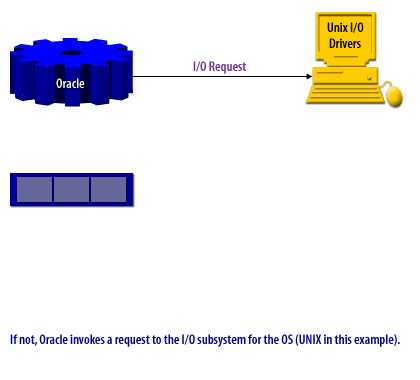
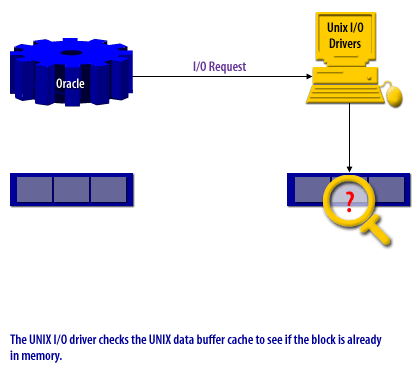
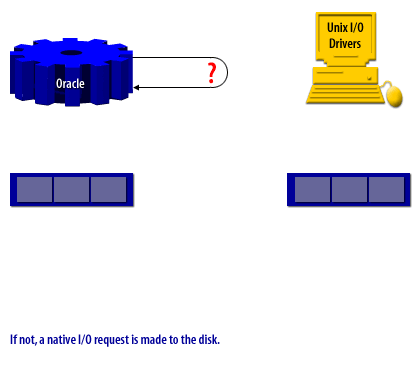
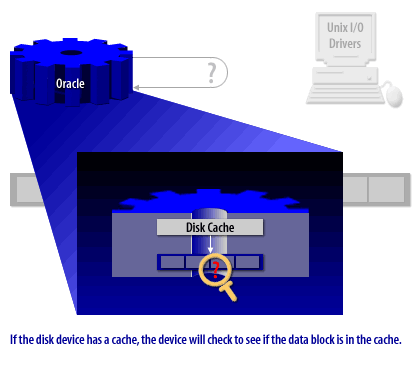

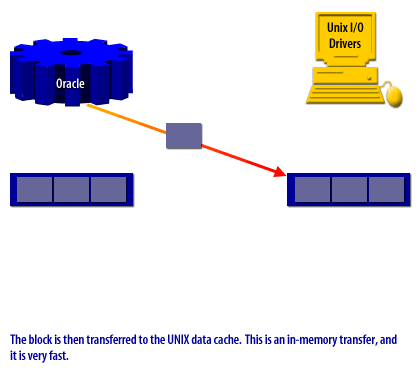
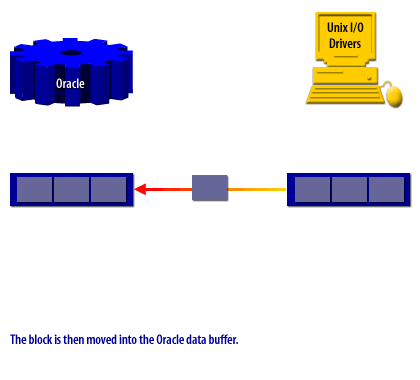
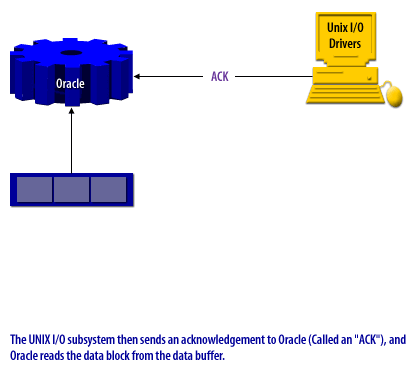
The most time consuming of these processes is reading the data block from disk.
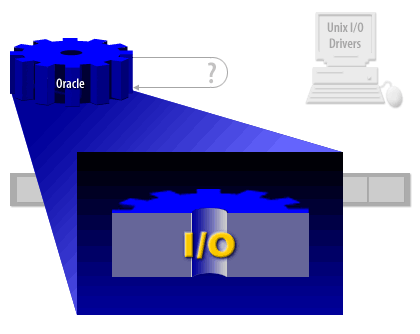
I/O Performance Factors
To review, a disk I/O can take several milliseconds, which does not sound like much time, but databases that perform hundreds of I/O per second will suffer a degradation in response time.
The time required to service an I/O (called latency) is the sum of the rotational delay on the disk, the seek delay as the read/write heads position themselves under the proper cylinder, and the data transmission time to the database server.
The time required to service an I/O (called latency) is the sum of the rotational delay on the disk, the seek delay as the read/write heads position themselves under the proper cylinder, and the data transmission time to the database server.

We will devote an entire module to disk I/O, which is the single largest component of OS response time.
The next lesson looks at memory usage in the OS environment.
The next lesson looks at memory usage in the OS environment.